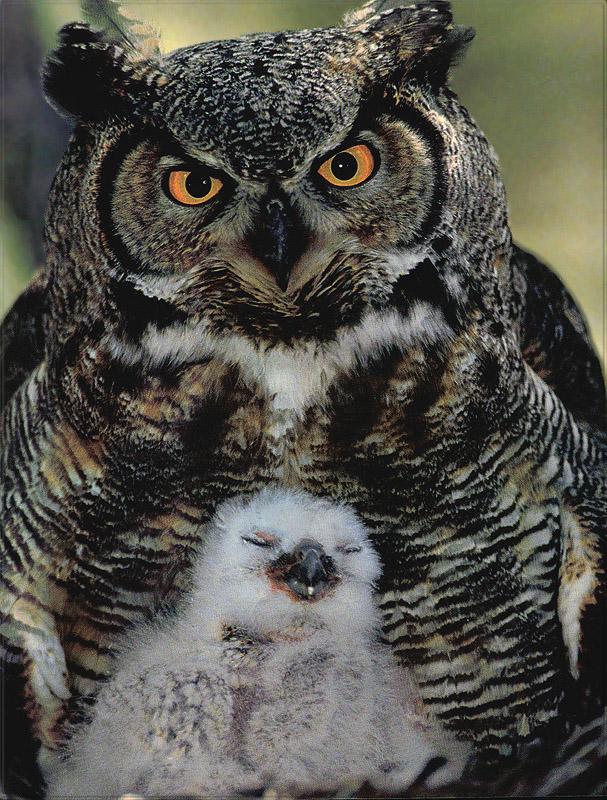|
Phoenix Rising Jungle Book 043 - Great Horned Owls mom and chick, Bubo virginianus
| 제목: | Phoenix Rising Jungle Book 043 - Great Horned Owls mom and chick, Bubo virginianus
| |

| 해상도: 607x800
파일크기: 126790 Bytes
등록시간: 2004:06:03 21:14:47
|
From: burnin@purgatory.com
Newsgroups: alt.binaries.pictures.animals
Subject: PR-JB - pr-jb043_great_horned_owl.jpg (1/1)
Date: 15 Aug 1999 09:53:19 GMT
Comments
=========
The Great Horned Owl (Bubo virginianus) is a large owl native to the Americas. It is a powerful, mottled-brown predator that ranges from Arctic tree limits south to the Strait of Magellan. The Great Horned Owls are extremely adaptable birds with a vast range and is the most widely distributed true owl in the Americas. Bubo virginianus is often more than 60 cm long, with a wingspan often approaching 200 cm. Its primary diet is rabbits and hares, rats and mice, and voles, although it freely hunts any animal it can overtake, including rodents and other small mammals, larger mid-sized mammals, birds, reptiles, amphibians, and invertebrates.
Order: Strigiformes > Family: Strigidae > Genus: Bubo > Species: Bubo virginianus |
^o^
동물그림창고 똑똑전화 누리집
^o^
|
|